Azores: A Warm Welcome and a Chance to Explore
After a 6000 mile passage from South Africa to the Azores, seasoned sailor Kia Koropp reflects on taking the time to explore one of the few places to stay open and provide a warm welcome to cruising sailors throughout the Covid-19 pandemic.
Published 4 years ago
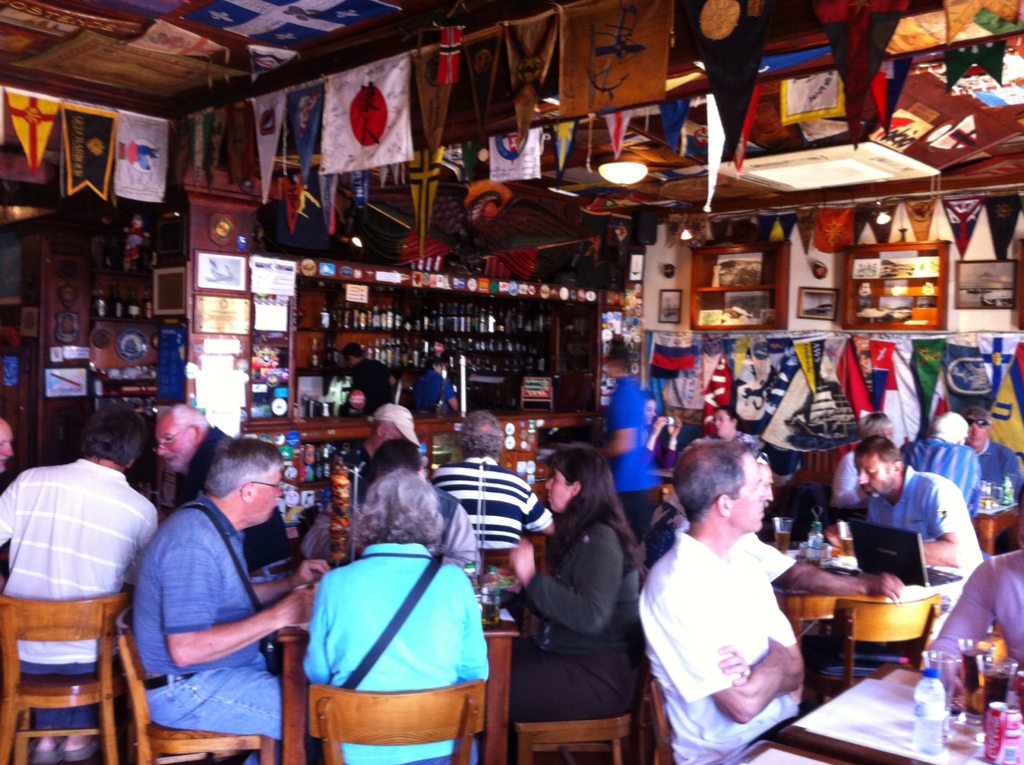

A Pint in Pete’s Bar
But for the first time I felt like I’d earned that right as I sat sipping a frothy pint in Peter’s Bar, with decade upon decade of captain’s hat (and the occasional captain’s bra) above my head. Peter’s Bar is as old as the volcano it is built on, currently run by third generation family members who continue to supply transiting mariners with more than just ale.
For generations Peter’s Bar has been the sole support for ships and people passing through, supplying provisions and parts, mail collection and delivery, medical supply and local gossip. It might’ve taken me 10 years, 55,000 miles and a few dozen ocean crossings, but I finally got it — that feeling of what it is like to be an old saltwort, worth her lick.
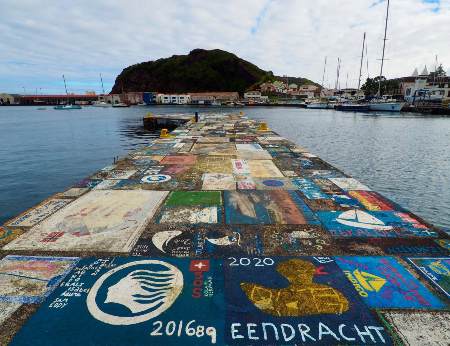

Of course, having just completed a two-month passage was a factor. I didn’t really feel the gravity of what that meant until we pulled into Horta at the conclusion of our 6,000 mile trip from South Africa to the Azores and people gave their congratulations as we sailed in. We shook hands ashore with people who already knew about us and were impressed by our recent time at sea. So, when I sauntered into Peter’s Bar and ordered a pint and sat down amongst the painted faces of patronage from generations past — Chichester, Montessier, Knox-Johnson — I felt that welling of pride. Yeah Shackelton, I gotcha bro.
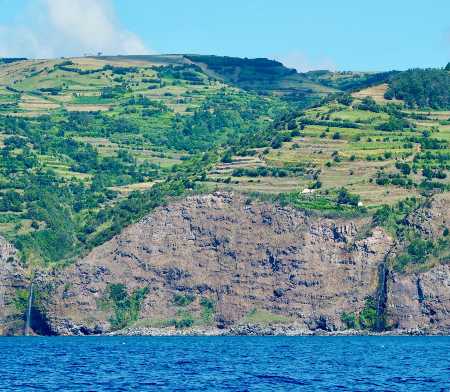 Discovering what’s at the end of a Voyage
Discovering what’s at the end of a Voyage
After two weeks swaggering around the streets of Horta en simpatico with those cruising legends, it was time to refocus on the reason I spend all this time on a boat: To explore. For me the beauty of boats isn’t weather routing, reefing sails and clocking ocean miles. I like all that — particularly the ocean miles surrounded by the beautiful silence of that endless, endless sea. What I like most, above and beyond it all, is what lays at the other end. I like charting the destination and then rolling in and discovering the truth of a place beyond my ignorant expectation. Or often, my lack of expectation. Maybe my high school history told me more than just its geography, or perhaps the news has revealed some current catastrophe. But often a country means no more to me than a name on the map. Then I draw a line between where I am and where it lies. Then I point my boat in that direction and spend weeks watching as it gets closer and closer. And then one morning, bam, I am there on her shores — everything new and unknown and waiting to be discovered.
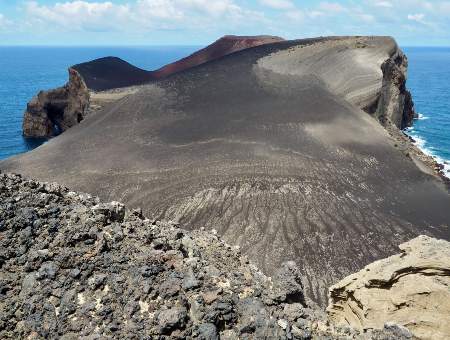 Exploring The Azores
Exploring The Azores
The Azores was like this for me. I’d heard of the Azores. Perhaps in the news. Perhaps in a lesson given by my 11th grade teacher. But I hadn’t learned about the Azores. I marched my kids around the streets and the countryside, to the popular sights and through the museums and they were as gobsmacked about its rich history at seven and nine as I was at 46.
The sordid plight of the Sperm Whale and its involvement in the near decimation of the species, its long-time influence in maritime history and its significance as a trade hub between Europe and the Americas, its ever bubbling and exploding volcanoes. How did I miss all that fascinating history? How cool to be learning about all of it now.
Neither did I have any current knowledge of the Azores when I arrived, but everything I was hearing on getting there had me itching to explore. Volcanic craters, lava tubes, black lava pools, lava rock vineyards, the barren exterior, the lush interior, the bulls and the bull fights. Highlight after highlight — it was time to bring my modern-day explorer into action.
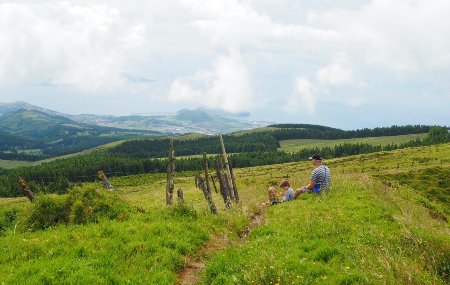

We focused our time on four of the seven islands that make up the Azores: Faial, Pico, Sao George and Teceria. Faial was a highlight in its volcanic highlights. We anchored in the main harbour and took day trips throughout the island from there – the north was the wet, lush and tropical, with dense forest to hike through, high altitude lakes and fantastic views of the island. The south was dry and developed, with the capital Horta as the economic and social centre. Town was a twist of small winding streets that led from the town basin to the hills with a fantastic botanical garden at the top of it.
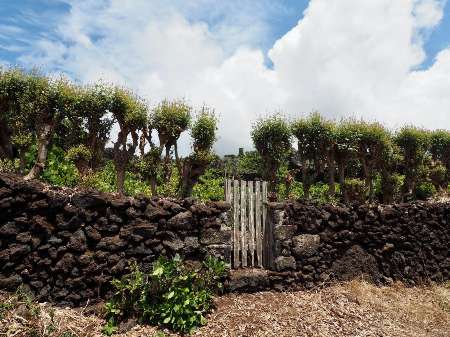 A Volcanic Landscape
A Volcanic Landscape
The architecture had the look of a quintessential small European mountain village with uniform architecture and colour, however on close inspection was a mix of well-maintained homesteads and dilapidated ruins. Apparently, the most recent volcanic eruption in the 1950s sent most of the population to America, and much of the population had returned over the years but many had chosen to stay, leaving their houses abandoned but still in family ownership. The west was the dramatic Capelinhos volcanic crater and to the east the caldera and running all around the island was a succession of volcanic lava pools, stunning in appearance and unique in structure.
Pico is a singular vocalic cone that juts out from the sea with cooled lava flow visible down its sides. There is a small harbour with a busy ferry terminal and swinging room for a yacht or two within. The island is known for its local wine production and tourists flock there to see its unique method of growing grapes — individual plants separated by a square fence made from intricately stacked lava rocks, protecting the hard earth from erosion and the plants from wind burn. We spent our day measuring 32,000 steps with the periodic pinch of grape and dip in the sea. Given two of our team have legs that measure 75cm in length, the fact that we marched around a volcano in the heat all day is something to commend them for.
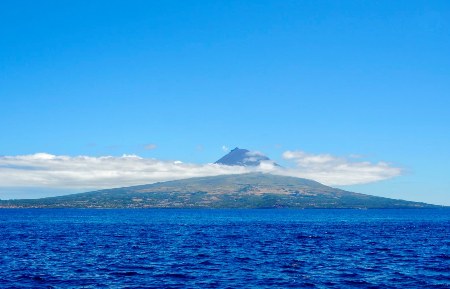

From Faial we sailed for the long southern stretch of Sao George’s dramatic coastline. Hunkering down in a tiny one-boat harbour, we enjoyed crystal clear waters, a small local village and a forested mountainside that came alive with the sound of birdlife at dawn and dusk. There was very little to do in the five-shop village and so we spent our days away from the business that had defined our experience in Horta and enjoyed the quiet quaintness of our little spot.
We took a holiday and treated the boat as a pleasure craft and not a mobile home. We enjoyed slow mornings and midday swims, spent the afternoon amidst toys and tonic and ate our meals as picnics on deck. Life as a live-aboard cruiser can often be fraught with boat jobs and normal life requirements that leave little of the idyllic lifestyle. So, it was with great pleasure and enjoyment that we put all tasks on hold and just enjoyed the quiet, simple life.
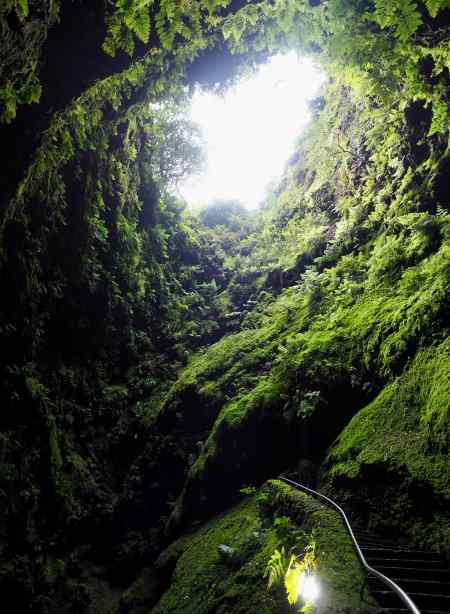 The Bullfight
The Bullfight
Our last main anchorage was off the southeast corner of Terceria. This became quite a social hub for us, reconnecting with several yachts we’d hung out with along the way and meeting several others. We rented a car and toured the island, wandering again down lava tubes below the earth and getting lost in the labyrinth of caverns of old extinguished volcanoes. The villagers throughout the island were clearly bull-centric, as each village had a bull ring and many private estates had bullfighting training rinks and stables.
Due to Covid the usual September bull fighting festivities had been cancelled but we were fortunate to be able to go to the only fight that was put on for the year — while animal cruelty is usually something I like to avoid, cultural traditions are a privilege to observe as a foreigner. Sitting amidst the enthusiastic Azorian crowd mask on, we watched bull after bull be taunted and tortured to the dance of the skilled matador and the beauty of his trained horse, and joined in with the jeering, cheering crowd.
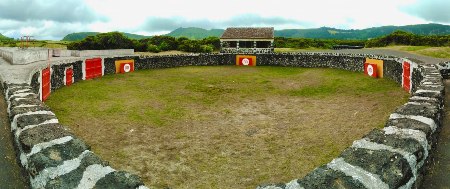

But this year brought only one professional show, done to bring funds into the Catholic Church and appease the demands for this centuries-old tradition. While travel this year means minimised social engagements, reduced cultural events and restricted tourist sites, it also means fewer tourists, fewer lines and no need for reservations or bookings. It also allows a more natural, relaxed local atmosphere that is often thwarted by the influence of tourism.
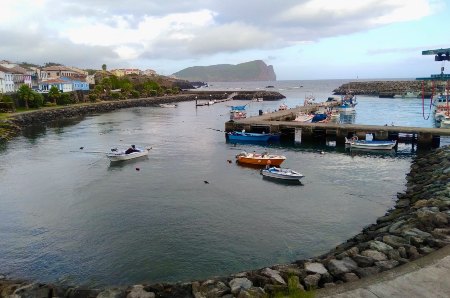

So, I count my blessings to have spent a few months traveling around the Azores when tourism is running at a fraction of its normal rate. Our interactions were with locals and our outings were low-key and authentic, and our travel free during a confined state for most of the globe.
Kia Korrop
SV Atea
http://svatea.com
…………………………………………………………………………………………………………………………………..
Other Reports by Kia:
- Gambia: Skirting the COVID Chaos (February 2021)
- INSIGHTS: Family Cruising – Jumping the Hurdles (Nov, 2020)
…………………………………………………………………………………………………………………………………..
The opinions expressed in this article are the author’s own and do not reflect the view of Noonsite.com or World Cruising Club.
Related to following destinations: Azores
Related to the following Cruising Resources: Atlantic Crossing, Cruising Information, Routing





Nice, well written piece. Hope to get there sometime soon. Thanks.